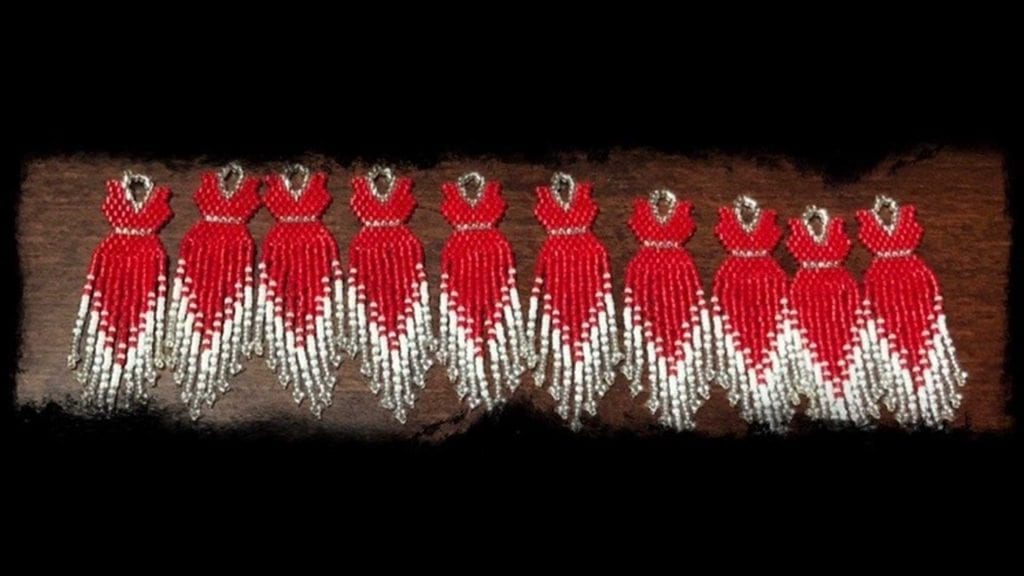
Red Dress earrings beaded by volunteers raise funds for MMIWG awareness. Photo courtesy: Lil' Red Dress Project.
The Trudeau government’s national action plan into missing and murdered Indigenous women and girls earned a failing grade Thursday for lacking in, well, action.
“The lack of concrete action is really raising great frustration,” said Viviane Michel, president of Quebec Native Women.
“It’s a really controversial issue.”
Pam Palmater, a Mi’kmaq lawyer and professor, was another of several Indigenous women who gathered online to critique the plan during a virtual news conference.
She was upset to hear it described as an “evergreen” or “first step” document.
“The last thing I want to hear in this country is that we have evergreen genocide,” she said.
The two documents – a National Action Plan and a Federal Pathway to Address Missing and Murdered Indigenous Women, Girls And 2SLGBTQQIA+ People – were released two years to the day after the final report of the National Inquiry into Missing and Murdered Indigenous Women and Girls (MMIWG).
Palmater and some others in the news conference noted they weren’t part of country-wide consultations with Indigenous Services Minister Carolyn Bennett on what should be included in the plan.
The government explained it would act on the plan in the fall.
Disappointing
But that disappointed people like Sheila Day, chair of the human rights committee for the Feminist Alliance for International Action.
“We were looking for and expecting concrete action with responsibilities assigned, timelines, and resource allocation,” she said.
“Instead what we have is a collection of federal, provincial, territorial statements that were issued to us this morning.”
The national inquiry released 231 individual calls for justice in 2019 aimed at ending the epidemic of violence against Indigenous women, girls and gender-diverse people.
It identified colonization as the root cause and called for immediate action.
Kukpi7 Judy Wilson, secretary treasurer of the Union of British Columbia Indian Chiefs, said deferring a response amounted to “delayed justice and denied justice.
“With this fragmented approach,” she told the news conference, “all these different organizations are doing their own action plans.”
Palmater noted the underwhelming plan was another blow during an already tough week.
Difficult time
“This comes at a particularly difficult time for Indigenous women and families who are also residential school survivors,” she said.
“The discovery of the mass grave of 215 children represents an incomprehensible trauma.”
On May 27, the Tk’emlups te Secwépemc band in B.C. revealed it had discovered the remains of 215 Indigenous children who were students of the former Kamloops Indian residential school.
Marion Buller, former chief commissioner of the national inquiry, said family members and victims would be the best judges of the national action plan.
“If family members and survivors of violence are satisfied with the National Action Plan, then I am, too,” she told APTN News.
“I hope that, in light of the discovery of the 215 beloved children at the Kamloops Residential School, all Canadians will now believe the truths told by families and survivors at the National Inquiry about the genocide that continues today and hold all governments to account.”
For immediate emotional assistance call 1-844-413-6649. This is a national, toll-free, 24/7 crisis call line providing support for anyone who requires emotional assistance related to missing and murdered Indigenous women and girls.









